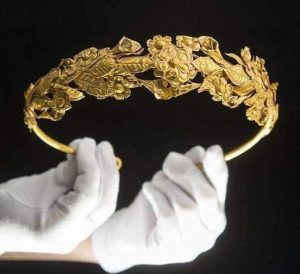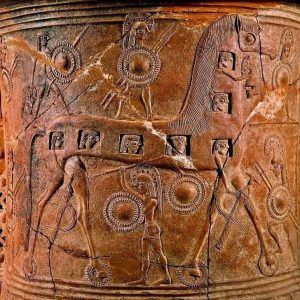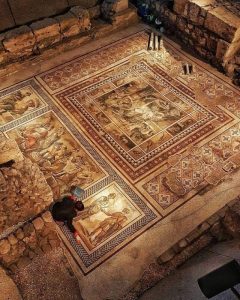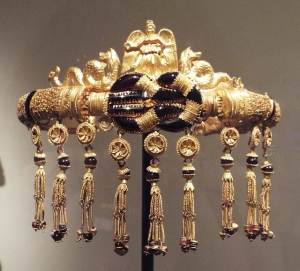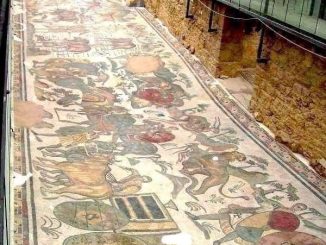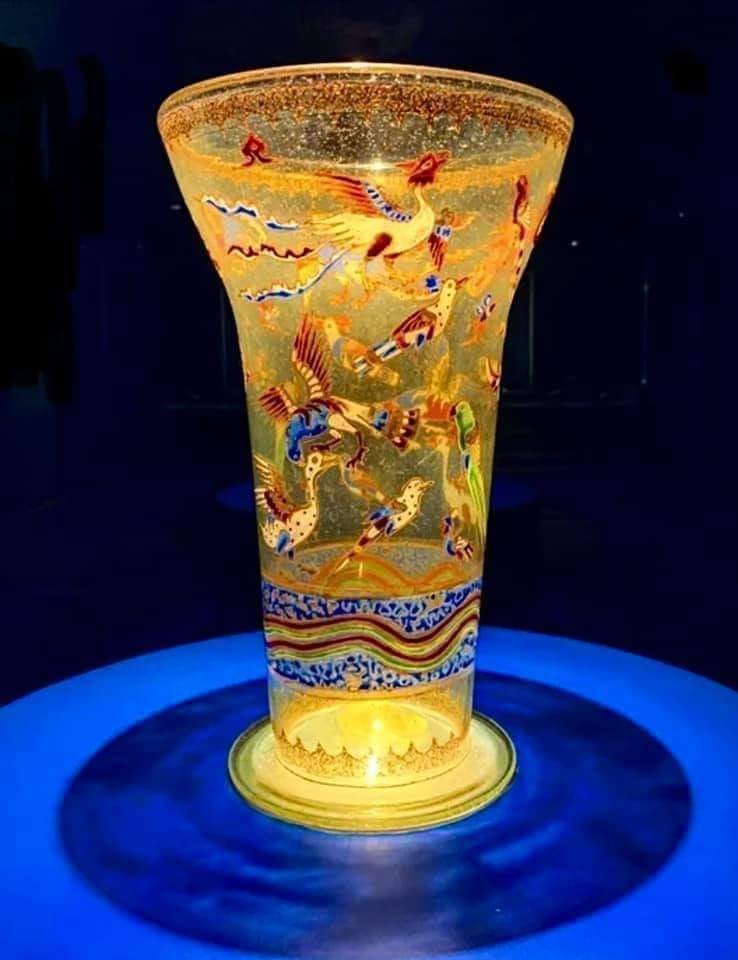
In the annals of Islamic art history, the Mamluk period stands out as a golden age of artistic innovation and cultural flourishing. One remarkable artifact from this era is the Mamluk enamel and gilded glass beaker, dating back to the 14th century CE. Adorned with intricate depictions of legendary and real birds, this exquisite vessel offers a glimpse into the sophisticated craftsmanship and aesthetic sensibilities of the Mamluk artisans. Believed to have originated from Egypt or Syria, this beaker serves as a testament to the rich artistic heritage and cross-cultural exchanges that characterized the Mamluk era.
Unraveling the Mysteries of the Mamluk Beaker
- Artistic Mastery: The Mamluk enamel and gilded glass beaker exemplifies the consummate skill and artistry of Mamluk craftsmen. Crafted from translucent glass, the beaker is adorned with delicate enamel and gilded decorations depicting a diverse array of birds, both mythical and real. The intricate designs, meticulously executed with vibrant colors and fine gold detailing, showcase the technical prowess and aesthetic refinement of Mamluk artisans. Each bird is rendered with precision and elegance, capturing the grace and beauty of the avian world. Through their mastery of glassmaking and enamelwork, Mamluk craftsmen transformed everyday objects into dazzling works of art, revered for their beauty and craftsmanship.
- Symbolism and Allegory: The imagery depicted on the Mamluk beaker is rich in symbolism and allegory, reflecting the cultural and religious milieu of the Mamluk period. Birds held significant symbolic value in Islamic art, representing spiritual attributes such as freedom, transcendence, and divine grace. The presence of both legendary and real birds on the beaker suggests a blending of mythological symbolism with naturalistic observation, illustrating the Mamluk artists’ reverence for the natural world and their belief in the interconnectedness of the earthly and celestial realms. Through their art, Mamluk craftsmen sought to imbue everyday objects with deeper layers of meaning, inviting viewers to contemplate the mysteries of the cosmos.
- Cultural Context: The Mamluk period, spanning from the 13th to the 16th centuries, was a time of cultural dynamism and cosmopolitanism in the Islamic world. As the rulers of Egypt and Syria, the Mamluks presided over a diverse and multicultural society, fostering an environment conducive to artistic innovation and intellectual exchange. The Mamluk beaker reflects this cultural pluralism, drawing inspiration from diverse artistic traditions and incorporating elements of Persian, Byzantine, and Chinese influences. Its intricate designs and exquisite craftsmanship attest to the cosmopolitan ethos of the Mamluk court, where artisans from various backgrounds collaborated to create objects of unparalleled beauty and refinement.
- Archaeological Significance: The discovery of the Mamluk enamel and gilded glass beaker is a testament to the enduring legacy of the Mamluk civilization and the importance of archaeological research in uncovering its treasures. Excavations at sites in Egypt, Syria, and other regions of the Islamic world have yielded a wealth of artifacts that shed light on the artistic achievements and cultural heritage of the Mamluk period. Through meticulous study and analysis, archaeologists can trace the origins and provenance of these objects, piecing together the puzzle of Mamluk art and material culture. By preserving and studying artifacts like the Mamluk beaker, archaeologists contribute to our understanding of the past and enrich our appreciation of the diverse cultural traditions that have shaped human history.
Celebrating the Legacy of Mamluk Art
In conclusion, the Mamluk enamel and gilded glass beaker stands as a testament to the artistic brilliance and cultural richness of the Mamluk civilization. Its intricate designs, rich symbolism, and exquisite craftsmanship offer a window into the vibrant artistic traditions of the Islamic world during the 14th century CE. As we marvel at the beauty of this masterpiece, we are reminded of the enduring legacy of Mamluk art and the profound impact of cross-cultural exchanges in shaping the artistic landscape of the medieval Islamic world. Through continued archaeological research and scholarship, we can deepen our understanding of Mamluk art and culture, ensuring that its legacy continues to inspire and captivate future generations.

